Attending the International Sunbelt Social Network Conference
Vanessa Vargas-Nguyen ·Last June 26th-July 1st, 2018, I had the opportunity to attend and present at the 38th International Sunbelt Social Network Conference in Utrecht, the Netherlands. The Sunbelt Conference is the official conference of the International Network for Social Network Analysis (INSNA), the foremost professional academic association of researchers and practitioners of social network analysis (SNA). This 6-day conference was attended by users of SNA from various disciplines, offered a variety of workshops and featured 11-12 concurrent sessions throughout the day! For me, this highlighted more than ever the inherent interdisciplinary aspect of Social Networks and the field of Network Science. Although SNA initially emerged from social psychology, sociology, statistics, and graph theory, it is now being used in politics, economics, education, anthropology, health science, ecology and environmental science, among many others.
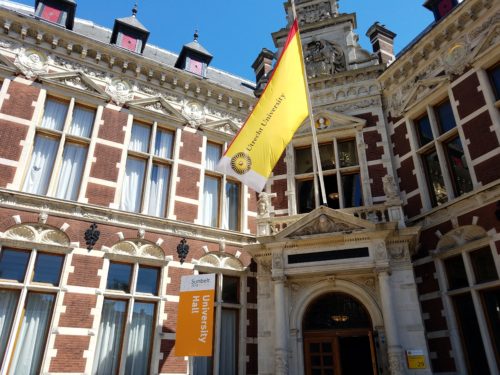
I was very excited to attend my first social network conference and my Sunbelt experience did not disappoint. The first time I saw the conference schedule though, I was a bit overwhelmed by all the different session topics, but the conference was very organized and easy to navigate once you got used to the logistics. Utrecht was amazing and the conference was held at the Dom Square, located in the very heart of the city and next to the Oudegracht, one of the most well-known canals in Utrecht. My initial plan was to use public transportation to get to the conference location since I did not booked a hotel downtown. What I did not realized until I got there was that the workshops were held at the University of Utrecht at the Utrecht Science Park, which was located outside of the city, the opposite direction from my hotel. And as luck would have it, there was a 3-day transportation strike that affected all local transportation! So after the first day of walking 30 mins each way, I decided to embrace the Dutch way of life and rented a bike! I made the right decision as Utrecht was very bike friendly and cycling is the best way to get to know and get around Utrecht!
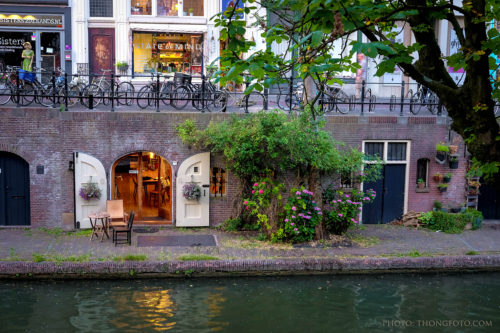

The workshops were held during the first day and a half of the conference, with a morning, afternoon and evening session in the first day and just the morning session the following day at the Marinus Ruppert Building, one of the many buildings of the University of Utrecht. You have to pay extra for these workshops but the student price was very reasonable especially for the quality of the instructions. These workshops were 3-hour long and were mostly crash courses of analytical methods and modelling for users of different levels, taught by renowned social network experts and in most cases, the actual developers of the analysis/model themselves. Being relatively new to SNA, I had a hard time narrowing my choice of workshops to attend but in the end I decided to take two that I could use for my dissertation – Algebraic Analysis of Multiplex Networks and Introduction to Egocentric Network Data Analysis.

The actual conference was held in various locations within the DOM square. The parallel sessions were held either inside the University Hall or the UCK (Utrechts Centrum voor de Kunsten) while the Welcome Reception and Plenary Session was held inside the impressive St. Martin's Cathedral, also known as Dom Church. During the opening remarks, Dr. Steve Borgatti, the president of INSNA shared a brief history of the Sunbelt Conference, to celebrate the twenty years of Network Science. The Keynote Speaker was Dr. Emmanuel Lazega, well-known for his network modeling of social processes (solidarity, social-control, regulation and learning) in a corporate law partnership. In his talk, he showed how these social processes and relational infrastructure (social status and social niches) evolve and develop over time. He shared his findings on the advice network of judges in an International Court and showed that over time certain central people tend to heavily influence and control this network. This is concerning if you think about how the law and justice should work.
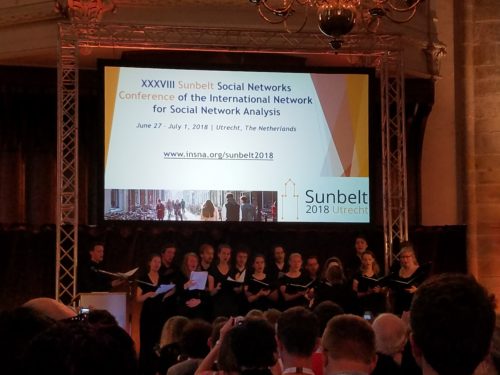
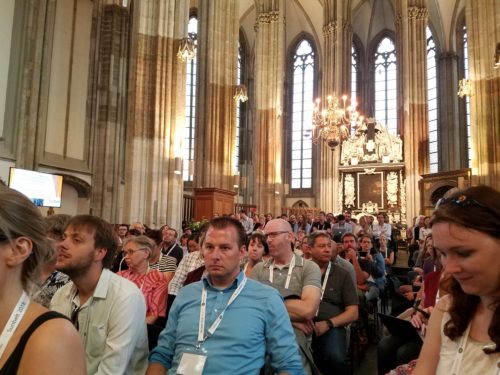
Another interesting aspect of the conference was the poster session held at the AULA Room inside the University Hall. As most rooms inside the University Hall, this place was impressive with its beautiful structure, works of art and high ceiling. Equally impressive were the various topics presented during the poster session, from learning and communication networks, collaboration and organizational networks, spread of technology and spread of disease, governance and, to my delight, environmental and natural resource management! A fellow student from the University of Maryland, Daniel Teodoro was also there to present his poster. Daniel and I were in the same Introduction to Social Network Short Course taught by Lorien Jasny at SESYNC last year and now we also both have Dr. Christina Prell on our research committees.
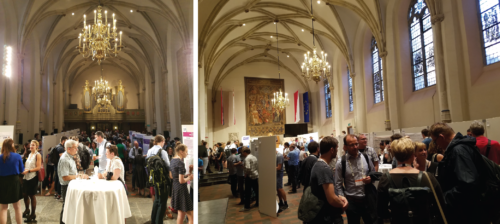
As impressive as the variety of topics were during the poster session, it was just a small fraction of the topics covered during the presentations. There were over 30 different sessions during the conference, with about 120 concurrently scheduled 15-minute presentations each day. My presentation was under the “Network approaches for understanding collaborative environmental governance” session chaired by Jacob Hileman and Orjan Bodin. I was happy because although this is a relatively new field of study, the session was well attended and most of the pioneers were also there to present their paper. I had the great opportunity to learn from and connect with fellow researchers and scholars interested in the socio-ecological network perspective of environmental governance. There were also other sessions that I attended which I thought could have an application not just in my research but also in the work that we do at Integration and Application Network. These sessions were scientific networks, collaboration networks and knowledge diffusion, agent-based modelling, social networks and climate change, networks, collective action, and social movement and educational and learning networks. I will synthesize and discuss my reflections on these topics in a separate blog post.

All in all, the Sunbelt Conference is the best venue to learn about social networks and its community of practitioners. Utrecht is also the perfect place for a conference on networks. The city itself is an important link in the many “networks” within the Netherlands and Europe, both in past and in the present (i.e. transportation, education, history). After a week of being immersed in the world of social networks, I developed a greater appreciation on how small the world really is with all the different ways we can be connected with others. From my personal experience in this recent trip, one easy way to form connection is through a shared experience of a particular place or event. For example, I had instant connections with people in my hotel who were also attending the Sunbelt conference. I also met a fellow Filipina in my hotel and just from being native of the Philippines, we started talking like old friends and to this day we are still connected through social media. During the conference, I got to know Daniel more and met his fiancée because we are all from the University of Maryland and most of the people I chatted with during the conference were from the USA.
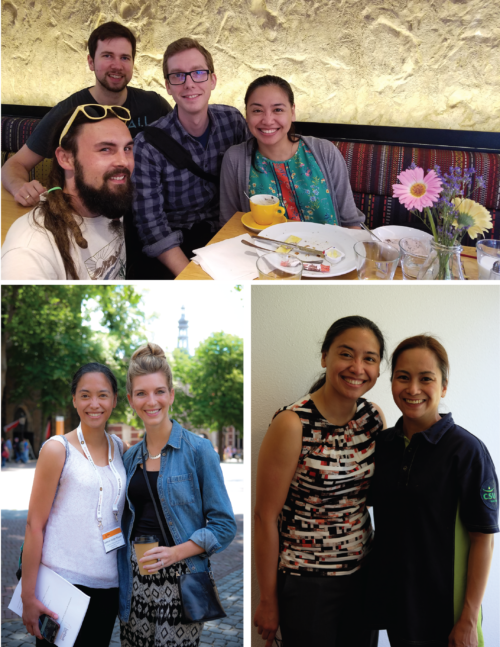
Another example of social networks in action was at the airport on the way back to the USA, completely unconnected to the conference. My husband and I were in line to check in on our flight and we started talking with the couple behind us. When my husband mentioned that I am a scientist working on the Chesapeake Bay, the couple lit up, and exclaimed “wow, you know, the Chesapeake Bay according to the latest report card is doing good, and it’s all thanks to all you scientists who are working on it!”. They became even more excited when they found out I am with the group that publishes the report card and proceeded to asked me how they can help and asked me some advice on which foundation they should affiliate with. It was a great feeling to know that in some ways our work in IAN is making a difference. Indeed, if people are connected to everyone by six degrees of separation (Stanley Milgram) and influence those up to three degrees (Christakis and Fowler), then tapping into the power of social networks can certainly make a difference!
About the author
Vanessa Vargas-Nguyen
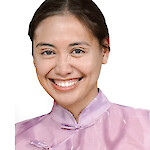
Dr. Vanessa Vargas-Nguyen is a Science Integrator with the Integration and Application Network and an associate faculty of the Marine Estuarine and Environmental Science Graduate Program. Her current interest is in transdisciplinary approaches, socio-environmental assessments, socio-environmental justice, stakeholder engagement, and adaptive environmental governance. Vanessa is originally from the Philippines and has extensive experience in molecular biology and marine science, specializing in microbial communities and molecular processes associated with Harmful Algal Blooms and shrimp, corals, and human diseases. She has since shifted her focus on how science can benefit society and was conferred with the first Ph.D. under the new Environment and Society foundation of the MEES graduate program. Her dissertation used ethnographic approaches to investigate the role of socio-environmental report cards in transdisciplinary collaboration and adaptive governance for a sustainable future. She received academic training from the University of the Philippines (BSc; MSc) and the University of Maryland (MSc; PhD). She is involved in developing holistic socio-environmental assessments for complex systems such as the Mississippi River and Chesapeake Bay watersheds and is coordinating a multi-year international transdisciplinary research consortium involving the US, Norway, Philippines, Japan, and India.

